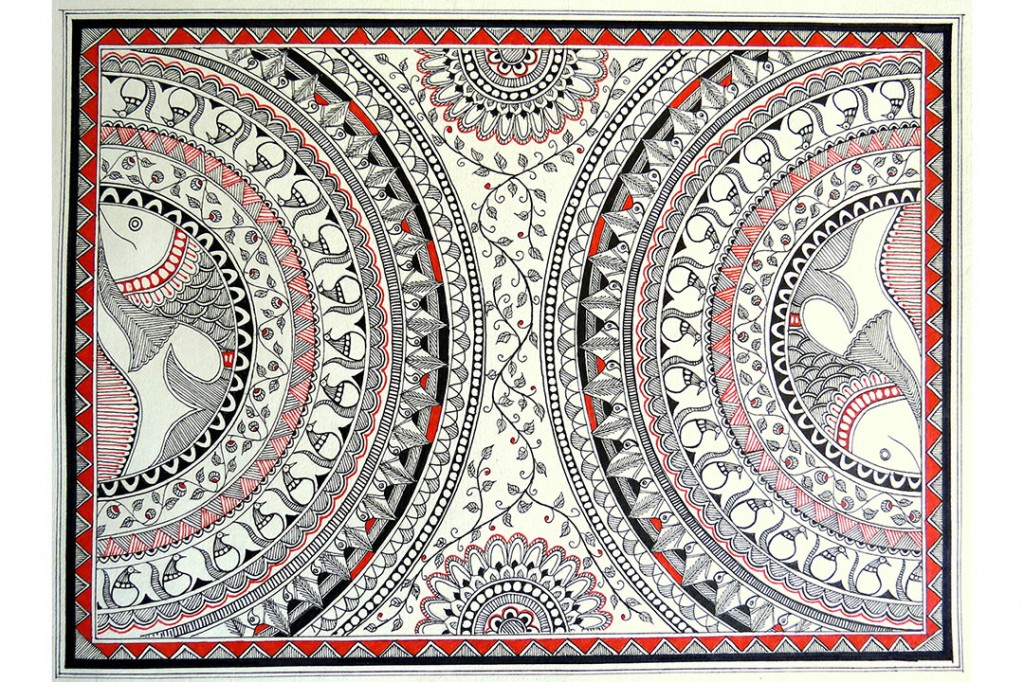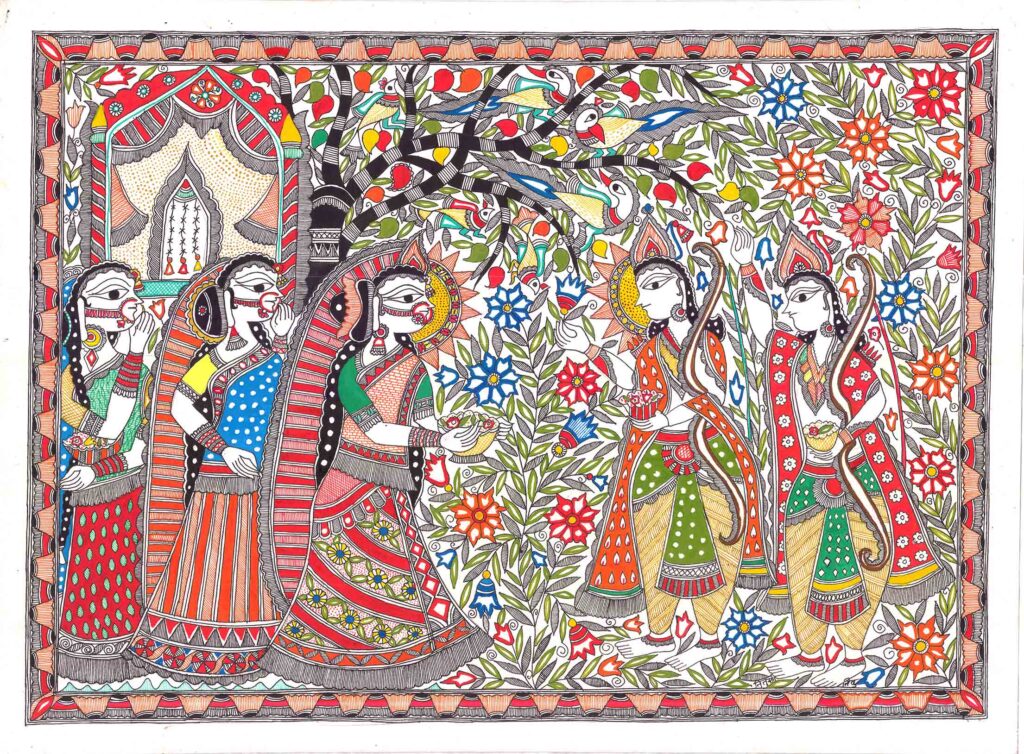
Madhubani Art – The History Behind the Vibrant Colours
Madhubani or mithila paintings is said to be a 2500-year-old form of art and traces its origin to the times of ramayana, although the exact period of its origin is not known.
The paintings were traditionally the work of art by the women of various communities in the mithila region in the state of bihar, india. In the past women would craft mesmerising patterns of madhubani art on the walls and floors of village huts during weddings, festivals or other ceremonies. These paintings are a reflection of the times and also based on the existing themes when it is created. Folklore has it that king janaka commissioned the local artists to adorn the palace walls with the beautiful madhubani paintings in order to celebrate his daughter sitas wedding to prince rama. The paintings were traditionally done on the walls of the kohbar ghar, also known as the nuptial chamber. Thus, symbolic images of fertility like lotus plants, and birds and snakes in a union were used, for the bride and groom who would spend their wedding night in this room.
The outside world was unaware of the beauty of the mithila paintings until the massive bihar earthquake of 1934 when the houses and walls tumbled down. The then british colonial officer posted in the madhubani district, william g. Archer came across the paintings on the walls of mithila homes while inspecting the earthquake damage. This is when these domestic ritual activities came to light to the outside world.
According to archer, these paintings showed similarities with the works of western artists like miro and picasso. The use of vibrant, bright colours is a characteristic that defines all these art forms. Thus, it led him to click a few black and white photos of some of these paintings, which today are the earliest images of the art. The indian art journal, marg also featured an article written by archer about the mithila paintings back in 1949. The regions around mithila saw a huge economic downfall due to the drought between 1966 to 1968. Pupul jayakar, the then director of the all india handicrafts board, sent bhaskar kulkarni, a bombay (now mumbai) based artist to mithila.
Her purpose was to uplift the economic conditions of this region by encouraging the women from here to replicate their mural paintings on paper which can facilitate in commercial sales. The madhubani art paintings today have gained popularity in both national and international markets, yet they have retained its basic essence with intricate detailing, the colourful palette and the beautiful narratives.

